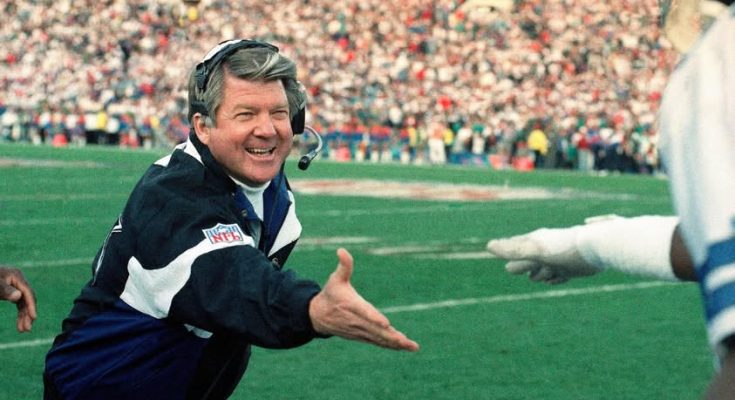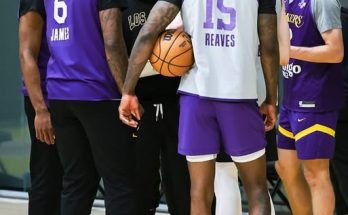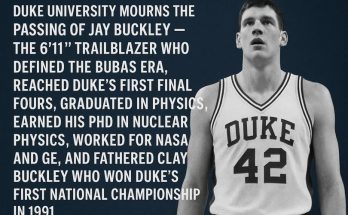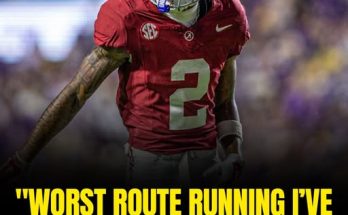Before Jimmy Johnson was leading the Dallas Cowboys to back-to-back Super Bowl championships in the early 1990s, he was in South Florida forging a program that would become the stuff of legend. The University of Miami, known as “The U,” was not the traditional football powerhouse prior to Johnson’s arrival. In fact, it was only starting to emerge from obscurity when he stepped onto campus in 1984. What happened over the next five years would reshape college football culture, redefine how talent was recruited and developed, and introduce an unprecedented swagger to the gridiron that still echoes today. Johnson didn’t just win at Miami—he built a monster. A juggernaut. And in doing so, he helped birth a football dynasty whose influence reached far beyond the win column.
When Johnson arrived at Miami, he inherited a program that had just won the 1983 national championship under Howard Schnellenberger. That team’s victory was monumental—it came against a heavily favored Nebraska squad and put Miami on the college football map. But despite that success, the program wasn’t yet a consistent force. Johnson had to not only sustain success but elevate it, and that required more than just good coaching. It required vision, culture, and an unwavering belief in an identity that was different from any other in the country.
Johnson’s approach to recruiting was perhaps the first major departure from traditional college football norms. Instead of focusing primarily on size or raw metrics, Johnson emphasized speed. He wanted players who could fly to the football, who were relentless, who were tough and fast and had a chip on their shoulder. He prioritized Florida kids—many from rough neighborhoods in Miami, Fort Lauderdale, and other parts of South Florida—who had grown up playing football in the intense, fast-paced environment of the Sunshine State. Johnson recognized that Florida was a goldmine of talent, and unlike some other coaches at the time, he embraced the unique culture those players brought with them.
These weren’t choir boys. These weren’t players being groomed to represent some sanitized version of a football program. Johnson’s teams were raw, unapologetically intense, and emotionally explosive. They played with a swagger that was deeply authentic and tied to where they came from. Johnson didn’t try to suppress that—he leaned into it. He encouraged it. And the results spoke for themselves.
From 1984 to 1988, Miami went 52–9 under Johnson. That includes a national championship in 1987 and multiple years finishing as one of the top teams in the nation. His teams beat the likes of Oklahoma, Florida State, Notre Dame, and Nebraska—programs that had long-established traditions of dominance. But perhaps more than the victories themselves was how Miami won. The Hurricanes didn’t just beat you—they embarrassed you. They danced in the end zone, talked trash before, during, and after games, and celebrated in ways that made traditionalists cringe. Johnson’s Hurricanes weren’t afraid to be the villain. In fact, they relished it.
But beneath all the swagger and showmanship was a team that was supremely well-coached and disciplined where it counted. Johnson’s background as a defensive-minded coach helped Miami become one of the most suffocating defenses in the country. He implemented a 4–3 defensive scheme that emphasized speed at every level. Linebackers were former safeties. Defensive ends were fast enough to chase down quarterbacks and running backs from behind. His teams were aggressive, and they punished opponents physically and mentally.
On the offensive side, Miami was just as formidable. Quarterbacks like Vinny Testaverde and Steve Walsh led the charge, throwing to future NFL stars and handing off to backs who could score from anywhere on the field. Johnson’s offense could grind out drives or score in a flash, depending on the situation. It was a system built for speed, execution, and intimidation.
Johnson also brought a psychological edge to the program. He knew how to motivate players and how to keep them focused through the grind of a season. He understood the importance of confidence, and he never allowed his players to feel like underdogs—even when they were. Johnson’s teams walked into every stadium believing they were the best, and more often than not, they were right.
One of the defining games of Johnson’s tenure came in 1986, when Miami faced off against Oklahoma—a team that was the defending national champion and ranked No. 1 in the country. The Sooners had an elite defense and a potent wishbone offense, but Johnson’s Hurricanes dismantled them with surgical precision. The game wasn’t just a win—it was a statement. Miami wasn’t just in the conversation for top program in the country. They were the conversation.
But it wasn’t always smooth sailing. Johnson faced criticism from media, opposing coaches, and even the NCAA. The Hurricanes’ behavior on and off the field drew scrutiny, and their lack of conformity to traditional collegiate norms made them a lightning rod for controversy. The infamous “Fatigues Game” in 1987, when Miami players arrived at the Fiesta Bowl in army fatigues, symbolized their militaristic mentality and further fueled the narrative that they were outlaws of college football. But none of it seemed to slow them down. If anything, it made them stronger.
The 1987 season was the crowning jewel of Johnson’s tenure at Miami. The Hurricanes went undefeated, capped off by a dramatic win over Oklahoma in the Orange Bowl to secure the national title. That team was loaded with talent—players who would go on to become NFL stars, Pro Bowlers, and even Hall of Famers. It was a culmination of everything Johnson had built: toughness, swagger, speed, and precision.
What’s often overlooked in recounting Johnson’s legacy at Miami is how much he changed the broader landscape of college football. He didn’t just win games—he shifted the paradigm. Programs began to emulate Miami’s style. Recruiting became more focused on speed and regional talent. Coaches began to understand that allowing players to express themselves could be a source of strength, not weakness. Johnson’s fingerprints were all over the game, and they still are today.
In 1989, Johnson left Miami to become head coach of the Dallas Cowboys, where he eventually won two Super Bowls and became one of the most iconic coaches in NFL history. But his time at Miami remains one of the most impressive coaching stints in the sport’s history. He took a program that had just tasted success and turned it into a dynasty. He did it his way—unapologetically, aggressively, and with an authenticity that couldn’t be duplicated.
The legacy of Johnson’s Miami years can be seen in the players he coached. Names like Michael Irvin, Bennie Blades, Jerome Brown, Russell Maryland, and Cortez Kennedy still resonate in football lore. These weren’t just good players—they were game-changers. They helped Miami dominate Saturdays in the fall, and they carried that impact with them into the NFL, where they became stars in their own right. Johnson helped mold them into winners, but more importantly, he gave them the freedom to be who they were.
One of the enduring lessons from Johnson’s tenure at The U is the importance of cultural fit in leadership. Johnson wasn’t trying to make Miami like Alabama, Penn State, or Notre Dame. He embraced what made South Florida different. He recruited players who fit the area, who fit his style, and who bought into the vision of what Miami could be. And in doing so, he created an identity that was as powerful off the field as it was on it.
Johnson’s success was not just about football. It was about psychology, sociology, and an understanding of human motivation. He knew that young men from tough backgrounds often played with something to prove. He gave them a platform to do that. He knew that confidence could be a weapon, and he sharpened it until it was lethal. He knew that winning wasn’t just about plays—it was about attitude, discipline, and belief.
Today, when people talk about the great college football dynasties, Miami under Johnson is always in the conversation. Not just because of the wins, but because of how they changed the game. They were trailblazers, rebels, and champions. They redefined what it meant to be a college football powerhouse. And it all started with Jimmy Johnson—a man who saw potential in a program and turned it into a machine.
Even decades later, the blueprint that Johnson created is still being followed. Coaches who value speed over size. Teams that thrive on swagger and confidence. Programs that tap into local talent and build a culture around belief and brotherhood. All of these ideas can be traced back, in some form, to Miami in the mid-1980s.
For fans of football—college or professional—the Jimmy Johnson era at Miami is a masterclass in team building, motivation, and leadership. It wasn’t perfect. It wasn’t always pretty. But it was effective, and it was unforgettable. Johnson didn’t just build a winner at The U. He built a monster. And in doing so, he helped change the very fabric of college football. The echoes of that monster still roar today, every time a team talks trash, plays with swagger, or recruits speed over size. That’s the Johnson legacy. That’s The U.



